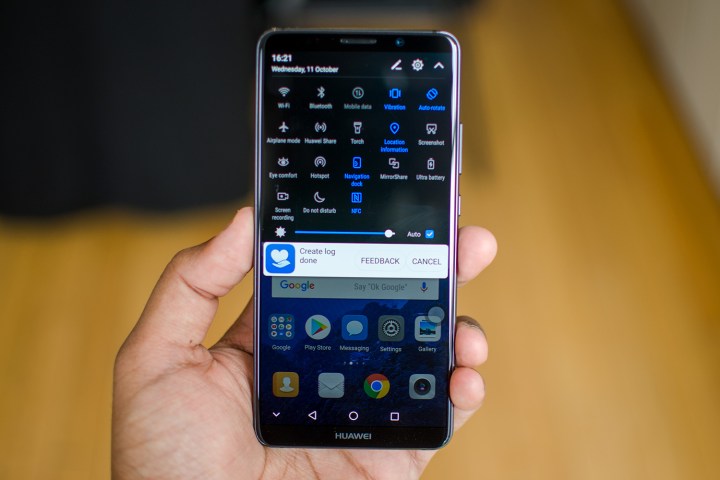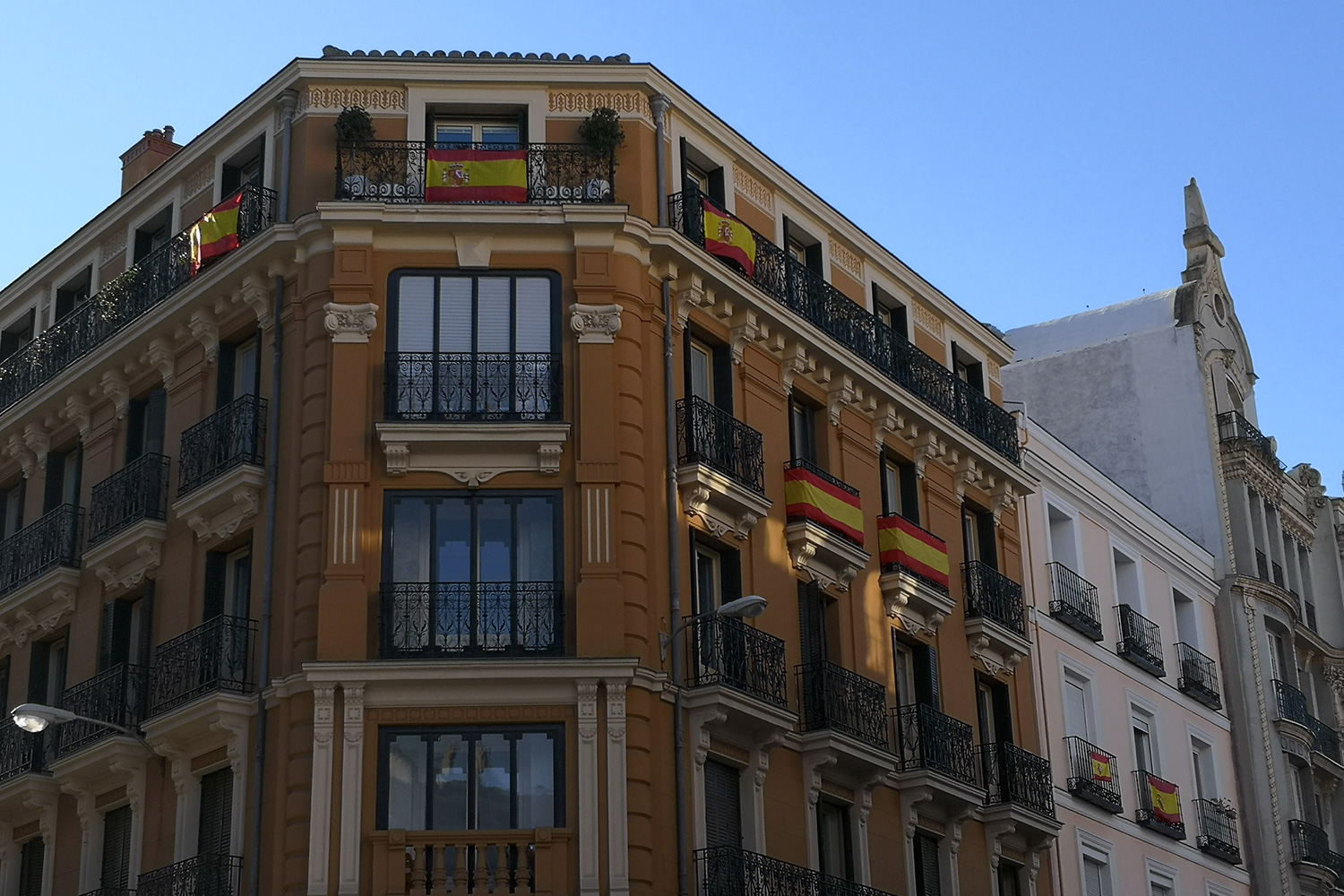
“From a superb camera to cutting-edge AI smarts, the Huawei Mate 10 Pro stylishly gets almost everything right.”
- Incredibly versatile dual-lens Leica camera
- Beautiful OLED screen with minimal bezels
- Two-day battery life
- Stylish, water-resistant body
- NPU shows promise
- No headphone jack
- EMUI design falls behind competition
- Expensive
The 2016 Huawei Mate 9 was targeted at business-types who wanted a smartphone for productivity. We liked it, but the Mate 9 was undeniably unattractive. It apparently led Huawei to change its approach for phone’s successor, the Mate 10 Pro, because it exudes everything we want from a faithful smartphone companion. In our Huawei Mate 10 Pro review, we find out if the new phone can live up to its highly-polished looks.
Subtly stunning
The Mate 10 Pro is very pretty. Huawei has minimized the edges around the screen considerably, with thin slivers running down both sides of the 6-inch screen, much like the LG V30 and the Samsung Galaxy S8. The 18:9 screen dominates about 80 percent of the phone’s front panel, which means it’s not as bezel-free as the iPhone X or the Xiaomi Mi Mix.
Supercar-levels of attractiveness await when you flip the phone over. It’s like the Mate 10 Pro has been cut from the body of a futuristic concept vehicle. Heat-treated glass for extra toughness curves at each side and covers the metal body, and a subtle but distinctive stripe surrounds the camera lenses. It’s smooth, cool to the touch, and catches the light in a beautifully eye-catching way. We love the blue model, but couldn’t resist our titanium review unit. It also comes in an equally delicious mocha brown. The color line-up for the Mate 10 Pro makes it hard to pick the best one; they’re all so tempting.
It’s not too slippery in the hand, but the curved body does tend to slide about on flat surfaces when placed face-up. A clear silicone case comes in the box, and we recommend using it or another case, not just for drop protection but also to avoid scratches on the glass body.
Supercar-levels of attractiveness await when you flip the phone over.
Everyday usability is enhanced by little things like the textured power button, which makes it easy for your finger to find without looking, and the excellent placement of the fingerprint sensor. This may depend on the size of your hand, but for us, it was perfect. Huawei’s fingerprint sensor is also one of the best in the business. It’s ridiculously fast, and accuracy is second to none, only being foiled by wet fingers. The slight camera lens bump assists with finding the sensor too, as you feel the very edge if your finger is slightly too far up the body.
Huawei has added IP67 water resistance to the Mate 10 Pro. It’s a welcome addition that offers a little peace of mind. If there is a problem, it’s that Huawei added water-resistance by dropping the 3.5mm headphone socket for the Mate 10 Pro. A dongle is included in the box, ready to plug into the USB Type-C charging port. Not ideal. What’s worse is Huawei uses Bluetooth 4.2 over the newer Bluetooth 5 standard, which offers improved range and data transfer speeds. It’s a baffling decision, and if Samsung can have a better water-resistance rating as well as headphone jack, so should Huawei.
The Huawei Mate series has previously been less attractive than Huawei’s P-series phones. Not any more. The Mate 10 Pro is the best looking phone Huawei has produced, and it’s easily among the best of the year from any manufacturer.
Colorful display
The Mate 10 Pro’s body may be compact — it’s smaller than an iPhone 8 Plus — but the screen measures 6-inches with an 18:9 aspect ratio, meaning it’s taller and thinner. It’s an OLED panel, like the new iPhone X, with a 2,160 x 1,080 pixel resolution, and it looks great. Despite the resolution not being as high as the non-Pro Mate 10, it’s still sharp, detailed, and the colors are stunning. It’s an odd decision, but we haven’t found ourselves missing a 2,560 x 1,440 pixel resolution.
Huawei has added HDR10 support to the Mate 10 Pro, and just like many modern televisions, it’s ready to enhance the color, black levels, and detail in compatible movies and TV shows. The problem is HDR10 mobile content isn’t widespread, and Netflix hasn’t added the Mate 10 Pro to its supported devices list yet, so finding content is a challenge.
It’s sharp, detailed, and the colors are stunning.
This isn’t a small phone, so using the screen with one hand and a thumb isn’t an easy task. The height of the screen makes reaching up for the notification shade a challenge without some jiggling around. The good thing is you can swipe down on the fingerprint scanner to bring down notifications, though this setting is off by default.
The screen’s sensitivity is excellent. We didn’t have any problems playing games, and using the interface. Typing is only a pleasure after installing Google’s Gboard. Huawei installed SwiftKey as the default option, and we found it frustrating to use, and less intuitive than Google’s keyboard found on many Android phones.
All about artificial intelligence
The new Kirin 970 octa-core processor drives the Mate 10 Pro, and performance excels. It’s the presence of the Neural Processing Unit, or NPU, that’s the headline grabber, as it’s purely to power complex artificial intelligence processing on device, rather than in the cloud. Although many of its benefits speed things up behind the scenes, you’ll see the NPU working in the camera and a translation app.
Running some benchmark apps, we can see how the Kirin 970 performs:
- AnTuTu: 176,544
- Geekbench 4: 6,716 multi-core, 1,918 single-core
- 3DMark Sling Shot Extreme: 2,937
Benchmarks are great for making comparisons — the Mate 10 Pro beats the Galaxy S8, but not the OnePlus 5, for example — but it’s not always illustrative of real world performance. The previous Kirin 960 was highly capable, and the Kirin 970 is a worthy successor. We played games like Happy Hop, Reckless Racing 3, and Arena of Valor, without any issues. The phone didn’t get hot, we didn’t experience any slowdown or stuttering, and it did everything we asked, right when we asked it.
How about the NPU? Huawei talked a lot about its benefits at the Kirin 970’s launch, but in most everyday situations you probably won’t realize it’s there. It works with the Kirin 970 to increase efficiency, and keep your phone running optimally so it doesn’t succumb to slowdown issues as the device ages. We can’t judge this on the Mate 10 Pro yet, but the Mate 9 — which has similar features without the NPU — is still performing well after nearly a year with on-and-off use.
One of the ways you can see the NPU in action is to open Microsoft’s translator app. Translating something through the camera, with voice, or via typing, all happens much faster than if the app relied solely on the cloud. Information is processed locally, rather than sending it to a server and retrieving it. While this speeds up translation, it doesn’t improve it, so you get what the app thinks is correct. Results vary depending on the language, but this isn’t the fault of the Mate 10 Pro or the NPU.
The Kirin 970 and its NPU have considerable potential for the future, and Huawei is putting massive resources into its development. At the moment this hasn’t been fully realized, and probably isn’t something most people are going to notice in action. This may change in the future when developers start using its abilities in apps and services made for the phone. It’s therefore hard to know how it’s enhancing the phone at the moment; but it’s certainly not doing it any harm.
Superb camera
Huawei continues its partnership with Leica on the Mate 10 Pro, and has also added in some artificial intelligence smarts through the Neural Processing Unit. The rear camera is made up of two sensors: A 12-megapixel, f/1.6 aperture, RGB color lens with optical image stabilization, plus a 20-megapixel, f/1.6 aperture monochrome lens. Working together they offer a 2x optical zoom, a bokeh portrait mode, while using the monochrome lens separately you get amazing black and white images without the need for a filter.
The results are spectacular. Day or night, sunny or overcast, inside or outside, the pictures the Mate 10 Pro takes are stunning. Huawei has tasked the NPU with image recognition duties on the camera, so it understands if you’re pointing it at a sunny scene, an animal, or food, for example. It’s instant, and it tweaks the settings accordingly without you needing to open the manual Pro mode. While the technology is very cool, and the pictures are excellent, you never know what difference the NPU is truly making. We do like seeing the indicator suddenly pop up showing the scene setting, and it never got it wrong. It’s also hard to argue with the results, and we’re always pleased to see an innovative software feature that makes life easier.
The Mate 10 Pro’s camera is spectacular.
Monochrome mode now has a bokeh mode, and it’s offers great results. The 8-megapixel f/2.0 front camera takes bokeh shots that — in the right lighting, with the NPU’s assistance and some patience — takes attractive selfies. The built-in photo editing suite is comprehensive, and we like the hybrid zoom feature.
There are a few issues. The camera turns itself off after a short while, requiring a screen tap to wake it up again, but it often happens when you’re trying to frame a shot. It’s annoying. There’s also a mode that takes short videos called Moving Pictures, like Apple’s Live Photo, and it’s really superfluous. Still, we’re nitpicking. The Mate 10 Pro’s camera is brilliant, and you’ll want to use it at every opportunity.
Android 8.0 and EMUI 8 software
The Mate 10 Pro runs Android 8.0 Oreo with Huawei’s EMUI 8.0 user interface over on top, and it also packs Google’s November Android Security Patch. All this means it’s just about as up-to-date as you can get right now. It’s not likely to last long, as Huawei’s track record with Android software updates isn’t great. While EMUI may get some attention, don’t expect Android itself to get the same love as you’ll find on a Google Pixel 2 phone, for example.
If you can live with this, the EMUI experience is greatly improved over older phones, and has been since the introduction of EMUI 5.1 on the Huawei P9, P10, and Mate 9. It’s faster, and easier to use, despite Huawei’s flourishes. Enter the system settings and the options list is minimal but a little confusing, and although you can change the overall theme, EMUI’s icon design is often jarring and inconsistent. We’d rather have stock Android icons, around which many app’s base their own icons on, giving the UI a more consistent overall look.
That said, the wallpapers are pretty, and we like the standard Magazine lock screen wallpaper that changes each time you hit the sleep/wake key. Google Assistant works as expected, and you can delete almost all the pre-installed non-essential apps. Huawei’s EMUI is closer to Samsung’s TouchWiz and LG’s UI than ever before, but Huawei can’t resist adding in “features” to cure problems that aren’t there. Namely, the Navigation Dock: A little virtual joystick that controls navigation. The Android keys everyone is used to work perfectly well. All the Navigation Dock does is give you something new to learn, but we do like the way it makes it possible to have a full-screen display all the time.
It’s not all bad news. App icons get Android Oreo’s little blobs telling you the app has new notifications. Split screen works well, and the implementation is logical and easy to understand without looking for assistance. Another great feature is Pocket PC, where all you need is a USB Type-C to HDMI cable to have a full-screen experience on a computer monitor or TV. It’s like Samsung DeX, but without the pricey dock. We’ll have to do more testing to see how well this works.
Battery and charging
Huawei has completely removed battery anxiety.
Huawei has worked some magic on the lithe Mate 10 Pro. Inside is a massive 4000mAh battery that has lasted us two full days between charges. Huawei has completely removed battery anxiety, and that’s a rarity these days, even with other smartphones with relatively large batteries such as the Samsung Galaxy Note 8. There’s plenty of software trickery making this possible, and power management has evolved into a true Huawei speciality.
Charging is also spectacularly fast, zipping to full in about 90 minutes using Huawei’s proprietary SuperCharge technology, which does mean you’ll always need the specific charger and USB cable to make it work.
Price, availability, and warranty
This is not a cheap smartphone. Huawei is playing with the big boys not only in terms of making a winning smartphone, but also in charging a lot for it. In Europe, the Mate 10 Pro costs 800 euros, or around $945; and in the U.S. the phone will retail for $800. Pre-orders start on February 4, and the Mate 10 Pro goes on sale on February 18. There is no carrier support, but you can purchase it from Amazon
The warranty in the U.K. covers the phone for two years, and the battery for six months. If you break it by accident, the warranty won’t cover it. Should you need to get the phone repaired or replaced, you’ll need to visit a Huawei service center. When the phone is available in the U.S., the warranty may depend on the retailer.
Our Take
Huawei gets the design, camera, screen, and battery exactly right on the Mate 10 Pro, while the NPU and AI smarts show promise for the future. It’s an exceptional all-round smartphone package we highly recommend.
Are there better alternatives?
Huawei has produced its best smartphone in a year when every other manufacturer has also stepped up its game, making competition really tough. The LG V30 is LG’s best phone yet, the Galaxy Note 8 is supremely capable and has a brilliant camera, just like the Pixel 2 XL, and the HTC U11. The iPhone 8 Plus may have been overshadowed by the iPhone X, but both are excellent smartphones worth your money. It’s impossible not to recommend the cheaper OnePlus 5 too. What a year for smartphones.
Pretty much every other flagship smartphone released in 2017 is a worthy alternative to the Mate 10 Pro. Not because the Mate 10 Pro is bad, just because it and everything else is so good.
How long will it last?
The Mate 10 Pro has IP67 water resistance, so it’ll survive a light dowsing, but not prolonged immersion in water. The body is made of glass — Gorilla Glass 5 — and is fragile like all glass phones. Put it in a case if you’re clumsy, or care about keeping the finish looking its best. The software is right up-to-date now, but it won’t stay that way for long, and Huawei isn’t fast at releasing new Android versions. This could leave your phone vulnerable to security problems, and the only way to guarantee updates is to buy a Google Pixel 2 phone.
Outside of the software, the hardware is cutting edge, and will easily last you through a two-year contract and beyond. Additionally, the real power and benefits of the NPU will come into play over time, as more apps and services begin to utilize its ability, so the Mate 10 Pro may actually improve with age.
Should you buy it?
Yes, and for once you can without using an importer, because the Huawei Mate 10 Pro is coming to the U.S.. The OLED screen is beautiful, the camera is fantastic, there’s masses of power, the battery lasts for a couple of days, and it’s damn good-looking too. Go on, treat yourself.
Update: We’ve added details about U.S. availability.


























